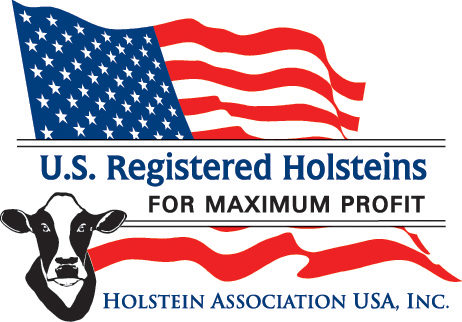Indiana dairy producers feel the pain of their corn- and soybean-farming brethren. The weekslong drought literally is drying up feed supplies in the field and leaving producers with some tough decisions, say two Purdue University Extension dairy specialists. Producers need to act now to make sure they have access to alternative feed sources if dry conditions persist and they plan to continue operating their dairies at current herd size, said Tamilee Nennich and Mike Schutz.
Some dairy producers might need to reduce herd sizes in order to survive, they said.
"The drought is creating significant challenges for dairy farmers and their herds because dairy farmers depend on harvested forages to provide feed for their animals," Nennich said. "However, there are a number of strategies producers can consider to reduce the financial impacts of the drought."
A strategy high on the priority list is seeking forage from outside sources.
"Drought conditions often result in reduced pasture, hay and silage yields, which can greatly reduce the typical supply of forage for a dairy farm," Schutz said. "Being proactive on sourcing additional forage can be beneficial, as availability of forages may be reduced and prices will continue to rise as demand increases."
Schutz said if forage is difficult to come by, producers might buy drought-stressed corn harvested as silage. Although it might not equal feed values of corn silage grown in a normal year, drought-stressed corn still can be a good source of feed.
"The moisture of these crops must be monitored closely to be sure the crop will ensile and ferment correctly," Schutz said. "You'll also want to test them for nitrate levels."
Schutz and Nennich offered other drought management strategies for dairy producers:
- Use non-forage fiber sources in dairy diets. "Although some effective fiber is necessary in a dairy cow's diet, non-fiber feed sources, such as soybean hulls, corn gluten feed, cottonseed hulls and wheat midds can help meet the animal's fiber requirements while still maintaining production and health," Nennich said. "Some less expensive effective fiber, such as straw or low-quality hay, may be added."
- Properly harvest and store forage to reduce loss and waste. Pay attention to forage moisture levels, the use of inoculants, proper packing and rapid recovery of silages to ensure proper preservation.
- Test forages for quality and to properly balance rations. Forage harvested in drought conditions might have much different nutrient qualities than forage harvested in a non-drought year. Nitrate levels also could be higher in drought-stressed forage.
- Limit-feed dairy heifers or have them custom-raised. Limit-fed diets can include larger amounts of grain and byproduct feeds, thereby reducing the amount of forage needed to raise heifers. If heifers are custom-raised by a third party, producers can devote feed resources to rations for lactating cows.
- Cull cows and heifers to stretch forage inventories and purchases. Make sure remaining animals are healthy and profitable while keeping in mind that replacement heifers could be in short supply and expensive later.
Producers also might consider leaving the dairy business altogether.
"Under extreme situations, selling the herd may ultimately be the best option to avoid substantial loss of equity in the farm," Schutz said.
"However, this decision needs to be made with the help of consultants, along with a thorough evaluation of the entire situation, to ensure that all options have been explored and discussed."
Nennich and Schutz have written a series of papers on issues related to drought and dairy production: "Drought Strategies for Dairy Cattle," "Feeding Dairy Cattle During Drought Conditions," "Determining a Value for Corn Silage" and an accompanying corn silage value calculator, "Culling Dairy Cows: An Opportunity for Improvement When Feed Supplies Are Tight" and "Should I Quit Dairying Because of the Drought?"
Indiana was home to about 1,550 dairy farms in 2011, employing nearly 8,800 people. Those dairies produced 3.54 billion pounds of milk worth more than $711 million in direct sales. Counting sales of culled cows and heifers, the state's dairy industry generated $1.45 billion in economic value. PD
—From Purdue University




